Research Progress of Self-Healing Thermal Barrier Coatings: A Review
Abstract
1. Introduction
2. Research Progress of Self-Healing Bulk Ceramics and Thermal Barrier Coatings
2.1. Basic Concept of Self-Healing Materials
2.2. Research Progress of the Self-Healing Ceramics
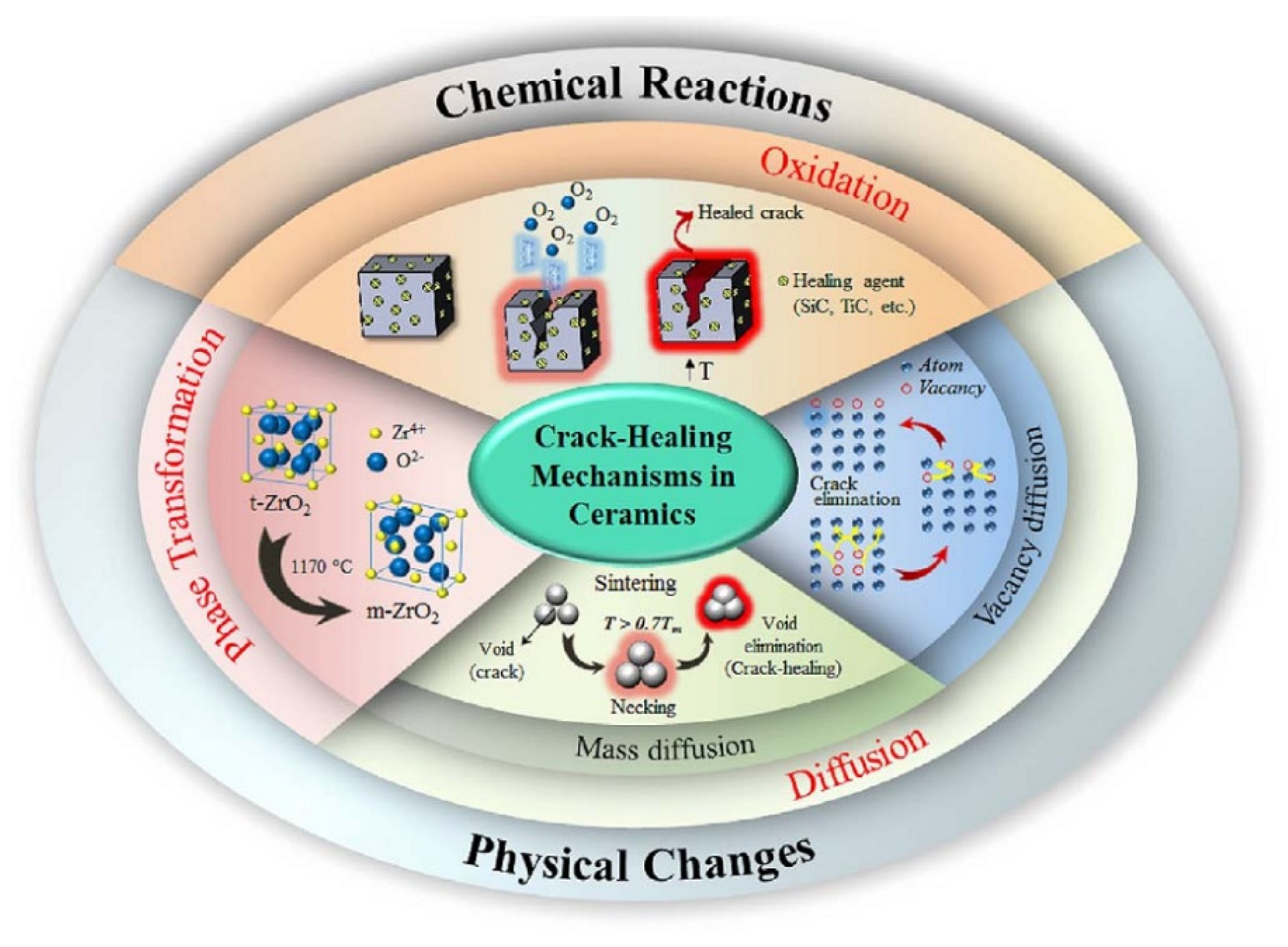
2.3. Research Progress of the Self-Healing Thermal Barrier Coatings
3. Outlook
4. Conclusions
Author Contributions
Funding
Institutional Review Board Statement
Informed Consent Statement
Data Availability Statement
Conflicts of Interest
References
- Clarke, D.R.; Levi, C.G. Materials design for the next generation thermal barrier coatings. Annu. Rev. Mater. Res. 2003, 33, 383–417. [Google Scholar] [CrossRef]
- Evans, A.G.; Mumm, D.R.; Hutchinson, J.W.; Meier, G.H.; Pettit, F.S. Mechanisms controlling the durability of thermal barrier coatings. Prog. Mater. Sci. 2001, 46, 505–553. [Google Scholar] [CrossRef]
- Cao, X.Q.; Vassen, R.; Stöever, D. Ceramic materials for thermal barrier coatings. J. Eur. Ceram. Soc. 2004, 24, 1–10. [Google Scholar] [CrossRef]
- Li, C.L.; Fan, X.L.; Jiang, P.; Jin, X.C. Delamination-indicating of atmospheric plasma sprayed thermal barrier coating system using Eu3+ luminescence mapping. Mater. Lett. 2018, 222, 41–44. [Google Scholar] [CrossRef]
- Qu, Z.L.; Wei, K.; He, Q.; He, R.J.; Pei, Y.M.; Wang, S.X.; Fang, D.N. High temperature fracture toughness and residual stress in thermal barrier coatings evaluated by an in-situ indentation method. Ceram. Int. 2018, 44, 7926–7929. [Google Scholar] [CrossRef]
- Zhu, W.; Zhang, Z.B.; Yang, L.; Zhou, Y.C.; Wei, Y.G. Spallation of thermal barrier coatings with real thermally grown oxide morphology under thermal stress. Mater. Des. 2018, 146, 180–193. [Google Scholar] [CrossRef]
- Tailor, S.; Upadhyaya, R.; Manjunath, S.Y.; Dub, A.V.; Modi, A.; Modi, S.C. Atmospheric plasma sprayed 7YSZ thick thermal barrier coatings with controlled segmentation crack densities and its thermal cycling behavior. Ceram. Int. 2018, 44, 2691–2699. [Google Scholar] [CrossRef]
- Ganvir, A.; Vaidhyanathan, V.; Markocsan, N.; Gupta, M.; Pala, Z.; Lukac, F. Failure analysis of thermally cycled columnar thermal barrier coatings produced by high-velocity-air fuel and axial-suspension-plasma spraying: A design perspective. Ceram. Int. 2018, 44, 3161–3172. [Google Scholar] [CrossRef]
- Yu, Q.M.; He, Q. Effect of material properties on residual stress distribution in thermal barrier coatings. Ceram. Int. 2018, 44, 3371–3380. [Google Scholar] [CrossRef]
- Shen, Q.; Yang, L.; Zhou, Y.C.; Wei, Y.G.; Zhu, W. Effects of growth stress in finite-deformation thermally grown oxide on failure mechanism of thermal barrier coatings. Mech. Mater. 2017, 114, 228–242. [Google Scholar] [CrossRef]
- Yu, Q.M.; Cen, L.; Wang, Y. Numerical study of residual stress and crack nucleation in thermal barrier coating system with plane model. Ceram. Int. 2018, 44, 5116–5123. [Google Scholar] [CrossRef]
- Yang, L.; Li, H.L.; Zhou, Y.C.; Zhu, W.; Wei, Y.G.; Zhang, J.P. Erosion failure mechanism of EB-PVD thermal barrier coatings with real morphology. Wear 2017, 392–393, 99–108. [Google Scholar] [CrossRef]
- Luo, L.R.; Shan, X.; Guo, Y.; Zhao, C.S.; Wang, X.; Zhao, X.F.; Guo, F.W.; Xiao, P. Thermal barrier coatings with interface modified by 3D mesh patterns: Failure analysis and design optimization. J. Am. Ceram. Soc. 2018, 101, 2084–2095. [Google Scholar] [CrossRef]
- Lv, B.W.; Fan, X.L.; Li, D.J.; Wang, T.J. Towards enhanced sintering resistance: Air-plasma-sprayed thermal barrier coating system with porosity gradient. J. Eur. Ceram. Soc. 2018, 38, 1946–1956. [Google Scholar] [CrossRef]
- Wang, L.; Zhong, X.H.; Shao, F.; Ni, J.X.; Yang, J.S.; Tao, S.Y.; Wang, Y. What is the suitable segmentation crack density for atmospheric plasma sprayed thick thermal barrier coatings with the improved thermal shock resistance? Appl. Surf. Sci. 2018, 431, 101–111. [Google Scholar] [CrossRef]
- Li, C.C.; Qiao, X.; Wang, T.; Weng, W.X.; Li, Q. Damage evolution and failure mechanism of thermal barrier coatings under Vickers indentation by using acoustic emission technique. Prog. Nat. Sci. Mater. Int. 2018, 28, 90–96. [Google Scholar] [CrossRef]
- Thakare, J.G.; Mulik, R.S.; Mahapatra, M.M. Effect of carbon nanotubes and aluminum oxide on the properties of a plasma sprayed thermal barrier coating. Ceram. Int. 2018, 44, 438–451. [Google Scholar] [CrossRef]
- Jonnalagadda, K.P.; Eriksson, R.; Yuan, K.; Li, X.H.; Ji, X.J.; Yu, Y.G.; Peng, R.L. Comparison of damage evolution during thermal cycling in a high purity nano and a conventional thermal barrier coating. Surf. Coat. Technol. 2017, 332, 47–56. [Google Scholar] [CrossRef]
- Su, L.C.; Yi, C.H. Effects of CMAS penetration on the delamination cracks in EB-PVD thermal barrier coatings with curved interface. Ceram. Int. 2017, 43, 8893–8897. [Google Scholar] [CrossRef]
- Yang, G.; Zhao, C.Y. Infrared radiative properties of EB-PVD thermal barrier coatings. Int. J. Heat Mass Transf. 2016, 94, 199–210. [Google Scholar] [CrossRef]
- Ganvir, A.; Joshi, S.; Markocsan, N.; Vassen, R. Tailoring columnar microstructure of axial suspension plasma sprayed TBCs for superior thermal shock performance. Mater. Des. 2018, 144, 192–208. [Google Scholar] [CrossRef]
- Gell, M.; Wang, J.W.; Kumar, R.; Roth, J.; Chen, J.; Jordan, E.H. Higher Temperature Thermal Barrier Coatings with the Combined Use of Yttrium Aluminum Garnet and the Solution Precursor Plasma Spray Process. J. Therm. Spray Technol. 2018, 27, 543–555. [Google Scholar] [CrossRef]
- Mahade, S.; Curry, N.; Bjorklund, S.; Markocsan, N.; Nylen, P. Engineered thermal barrier coatings deposited by suspension plasma spray. Mater. Lett. 2017, 209, 517–521. [Google Scholar] [CrossRef]
- Zhou, D.P.; Guillon, O.; Vassen, R. Development of YSZ Thermal Barrier Coatings Using Axial Suspension Plasma Spraying. Coatings 2017, 7, 120. [Google Scholar] [CrossRef]
- Bernard, B.; Quet, A.; Bianchi, L.; Schick, V.; Joulia, A.; Malie, A.; Remy, B. Effect of Suspension Plasma-Sprayed YSZ Columnar Microstructure and Bond Coat Surface Preparation on Thermal Barrier Coating Properties. J. Therm. Spray Technol. 2017, 26, 1025–1037. [Google Scholar] [CrossRef]
- Gupta, M.; Kumara, C.; Nylen, P. Bilayer Suspension Plasma Sprayed Thermal Barrier Coatings with Enhanced Thermal Cyclic Lifetime: Experiments and Modeling. J. Therm. Spray Technol. 2017, 26, 1038–1051. [Google Scholar] [CrossRef]
- Anwaar, A.; Wei, L.L.; Guo, Q.; Zhang, B.P.; Guo, H.B. Novel Prospects for Plasma Spray-Physical Vapor Deposition of Columnar Thermal Barrier Coatings. J. Therm. Spray Technol. 2017, 26, 1810–1822. [Google Scholar] [CrossRef]
- Mao, J.; Liu, M.; Deng, C.G.; Deng, C.M.; Zhou, K.S.; Deng, Z.Q. Preparation and Distribution Analysis of Thermal Barrier Coatings Deposited on Multiple Vanes by Plasma Spray-Physical Vapor Deposition Technology. J. Eng. Mater. Technol.-Trans. ASME 2017, 139, 041003. [Google Scholar] [CrossRef]
- Zhang, B.P.; Wei, L.L.; Gao, L.H.; Guo, H.B.; Xu, H.B. Microstructural characterization of PS-PVD ceramic thermal barrier coatings with quasi-columnar structures. Surf. Coat. Technol. 2017, 311, 199–205. [Google Scholar] [CrossRef]
- Schmitt, M.P.; Harder, B.J.; Wolfe, D.E. Process-structure-property relations for the erosion durability of plasma spray-physical vapor deposition (PS-PVD) thermal barrier coatings. Surf. Coat. Technol. 2016, 297, 11–18. [Google Scholar] [CrossRef]
- Song, J.B.; Zhang, X.F.; Deng, C.M.D.C.G.; Liu, M.; Zhou, K.S.; Tong, X. Research of in situ modified PS-PVD thermal barrier coating against CMAS (CaO-MgO-Al2O3-SiO2) corrosion. Ceram. Int. 2016, 42, 3163–3169. [Google Scholar] [CrossRef]
- Zhou, X.; Wang, J.S.; Yuan, J.Y.; Sun, J.B.; Dong, S.J.; He, L.M.; Cao, X.Q. Calcium-magnesium-alumino-silicate induced degradation and failure of La2(Zr0.7Ce0.3)2O7/YSZ double-ceramic-layer thermal barrier coatings prepared by electron beam-physical vapor deposition. J. Eur. Ceram. Soc. 2018, 38, 1897–1907. [Google Scholar] [CrossRef]
- Mauget, F.; Hamon, F.; Morisset, M.; Cormier, J.; Riallant, F.; Mendez, J. Damage mechanisms in an EB-PVD thermal barrier coating system during TMF and TGMF testing conditions under combustion environment. Int. J. Fatigue 2017, 99, 225–234. [Google Scholar] [CrossRef]
- Pereira, V.; Nicholls, J.R.; Newton, R. Modelling the EB-PVD thermal barrier coating process: Component clusters and shadow masks. Surf. Coat. Technol. 2017, 311, 307–313. [Google Scholar]
- Vaunois, J.R.; Poulain, M.; Kanoute, P.; Chaboche, J.L. Development of bending tests for near shear mode interfacial toughness measurement of EB-PVD thermal barrier coatings. Eng. Fract. Mech. 2017, 171, 110–134. [Google Scholar] [CrossRef]
- Zhang, X.F.; Zhou, K.S.; Liu, M.; Deng, C.M.; Deng, C.G.; Song, J.B.; Tong, X. Enhanced properties of Al-modified EB-PVD 7YSZ thermal barrier coatings. Ceram. Int. 2016, 42, 13969–13975. [Google Scholar] [CrossRef]
- Ponnusami, S.A.; Krishnasamy, J.; Turteltaub, S.; van der Zwaag, S. A cohesive-zone crack healing model for self-healing materials. Int. J. Solids Struct. 2018, 134, 249–263. [Google Scholar] [CrossRef]
- Lange, F.F.; Gupta, T.K. Crack Healing by Heat Treatment. J. Am. Ceram. Soc. 1970, 53, 54–55. [Google Scholar] [CrossRef]
- Roy, J.; Chandra, S.; Das, S.; Maitra, S. Oxidation behaviour of silicon carbide-a review. Rev. Adv. Mater. Sci. 2014, 38, 29–39. [Google Scholar]
- Ando, K.; Chu, M.C.; Tsuji, K.; Hirasawa, T.; Kobayashi, Y.; Sato, S. Crack healing behaviour and high-temperature strength of mullite/SiC composite ceramics. J. Eur. Ceram. Soc. 2002, 22, 1313–1319. [Google Scholar] [CrossRef]
- Tavangarian, F.; Li, G. Bio-inspired crack self-healing of SiC/spinel nanocomposite. Ceram. Int. 2015, 41, 2828–2835. [Google Scholar] [CrossRef]
- Zhang, Y.H.; Edwards, L.; Plumbridge, W.J. Crack healing in a silicon nitride ceramic. J. Am. Ceram. Soc. 1998, 81, 1861–1868. [Google Scholar] [CrossRef]
- Wang, J.; Stevens, R. Modification of indentation cracks in TZP ceramics by thermal treatment. J. Mater. Sci. Lett. 1988, 7, 560–562. [Google Scholar] [CrossRef]
- Jun, L.; Zheng, Z.X.; Ding, H.F.; Jin, Z.H. Preliminary study of the crack healing and strength recovery of Al2O3-matrix composites. Fatigue Fract. Eng. Mater. Struct. 2004, 27, 89–97. [Google Scholar] [CrossRef]
- Fariborz, T.; Li, H.D.G.Q. Crack-healing in ceramics. Compos. Part B 2018, 144, 56–87. [Google Scholar]
- Raj, S.V.; Singh, M.; Bhatt, R.T. High Temperature Lightweight Self-Healing Ceramic Composites for Aircraft Engine Applications; NASA Technical Report; Glenn Research Center: Cleveland, OH, USA, 2013.
- Patel, A.J.; Sottos, N.R.; Wetzel, E.D.; White, S.R. Autonomic healing of low-velocity impact damage in fiber-reinforced composites. Compos. Part A 2010, 41, 360–368. [Google Scholar] [CrossRef]
- Pang, J.W.C.; Bond, I.P. A hollow fibre reinforced polymer composite encompassing self-healing and enhanced damage visibility. Compos. Sci. Technol. 2005, 65, 1791–1799. [Google Scholar] [CrossRef]
- Song, G.M.; Pei, Y.T.; Sloof, W.G.; Li, S.B.; van der Zwaag, S. Oxidation-induced crack healing in Ti3AlC2 ceramics. Scr. Mater. 2008, 58, 13–16. [Google Scholar] [CrossRef]
- Li, S.B.; Song, G.M.; Kwakernaak, K.; Zwaag, S.V.; Sloof, W.G. Multiple crack healing of a Ti2AlC ceramic. J. Eur. Ceram. Soc. 2012, 32, 1813–1820. [Google Scholar] [CrossRef]
- Huang, M.Y.; Li, Z.; Wu, J.; Khor, K.A.; Huo, F.W.; Duan, F.; Lim, S.C.; Yip, M.S.; Yang, J.L. Multifunctional Alumina Composites with Toughening and Crack-Healing Features Via Incorporation of NiAl Particles. J. Am. Ceram. Soc. 2015, 98, 1618–1625. [Google Scholar] [CrossRef]
- Dosbaeva, G.K.; Veldhuis, S.C.; Yamamoto, K.; Wilkinson, D.S.; Beake, B.D.; Jenkins, N.; Elfizy, A.; Fox-Rabinovich, G.S. Oxide scales formation in nano-crystalline TiAlCrSiYN PVD coatings at elevated temperature. Int. J. Refract. Met. Hard Mater. 2010, 28, 133–141. [Google Scholar] [CrossRef]
- Abu-Thabit, N.Y.; Makhlouf, A.S.H. Industrial Applications for Intelligent Polymers and Coatings; Springer International Publishing: Basel, Switzerland, 2016; Volume 5, pp. 437–477. [Google Scholar]
- Ozaki, S.; Osada, T.; Nakao, W. Finite element analysis of the damage and healing behavior of self-healing ceramic materials. Int. J. Solids Struct. 2016, 100–101, 307–318. [Google Scholar] [CrossRef]
- Abdul-Baqi, A.; van der Giessen, E. Indentation-induced interface delamination of a strong film on a ductile substrate. Thin Solid Films 2001, 381, 143–154. [Google Scholar] [CrossRef]
- Zhu, W.; Yang, L.; Guo, J.W.; Zhou, Y.C.; Lu, C. Determination of interfacial adhesion energies of thermal barrier coatings by compression test combined with a cohesive zone finite element model. Int. J. Plast. 2015, 64, 76–87. [Google Scholar] [CrossRef]
- Bakan, E.; Mack, D.E.; Lobe, S.; Koch, D. An investigation on burner rig testing of environmental barrier coatings for aerospace applications. J. Eur. Ceram. Soc. 2020, 40, 6236–6240. [Google Scholar] [CrossRef]
- Nair, M.S.; Tomar, M.; Punia, S.; Kukula-Koch, W.; Kumar, M. Enhancing the functionality of chitosan- and alginate-based active edible coatings/films for the preservation of fruits and vegetables: A review. Int. J. Biol. Macromol. 2020, 164, 304–320. [Google Scholar] [CrossRef] [PubMed]
- Meng, G.; Zhang, B.; Liu, H.; Yang, G.-J.; Xu, T.; Li, C.-X.; Li, C.-J. Vacuum heat treatment mechanisms promoting the adhesion strength ofthermally sprayed metallic coatings. Surf. Coat. Technol. 2018, 344, 102–110. [Google Scholar] [CrossRef]
- Zhang, B.-Y.; Yang, G.-J.; Li, C.-X.; Li, C.-J. Non-parabolic isothermal oxidation kinetics of low pressure plasma sprayed MCrAlY bond coat. Appl. Surf. Sci. 2017, 406, 99–109. [Google Scholar] [CrossRef]
- Klinkov, S.V.; Kosarev, V.F.; Shikalov, V.S.; Vidyuk, T.M.; Chesnokov, A.E.; Smirnov, A.V. Influence of preliminary heat treatment and ball milling of copper powder on cold spray process. Mater. Today Proc. 2020, 25, 360–362. [Google Scholar] [CrossRef]
- Bedon, C.; Machalická, K.; Eliášová, M.; Vokáč, M. Numerical Modelling of Adhesive Connections Including Cohesive Damage. In Proceedings of the Challenging Glass 6—Conference on Architectural and Structural Applications of Glass, Delft, The Netherlands, 17–18 May 2018. [Google Scholar]
- Wang, C.; Li, C.; Zhang, X. Tribological behaviors and self-healing performance of surface modification nanoscale palygorskite as lubricant additive for the steel pair. Mater. Res. Express 2020, 7, 106517. [Google Scholar] [CrossRef]
- Ya, B.; Zhou, B.; Yang, H.; Huang, B.; Jia, F.; Zhang, X. Microstructure and mechanical properties of in situ casting TiC/Ti6Al4V composites through adding multi-walled carbon nanotubes. J. Alloys Compd. 2015, 637, 456–460. [Google Scholar] [CrossRef]
- Gao, J.; Suo, J. Effects of heating temperature and duration on the microstructure and properties of the self-healing coatings. Surf. Coat. Technol. 2011, 206, 1342–1350. [Google Scholar] [CrossRef]
- Gao, J.; Zhang, D.; Suo, J. Tritium permeation barrier based on self-healing composite materials. Fusion Eng. Des. 2010, 85, 1618–1623. [Google Scholar] [CrossRef]
- Gao, J.; Suo, J. Proposal of self-healing coatings for nuclear fusion applications. Surf. Coat. Technol. 2010, 204, 3876–3881. [Google Scholar] [CrossRef]
- Ouyang, T.Y.; Fang, X.W.; Zhang, Y.; Liu, D.W.; Wang, Y.; Feng, S.J.; Zhou, T.; Cai, S.Z.; Suo, J.P. Enhancement of high temperature oxidation resistance and spallation resistance of SiC-self-healing thermal barrier coatings. Surf. Coat. Technol. 2016, 286, 365–375. [Google Scholar] [CrossRef]
- Wang, L.; Shao, F.; Zhong, X.H.; Ni, J.X.; Yang, K.; Tao, S.Y.; Wang, Y. Tailoring of self-healing thermal barrier coatings via finite element method. Appl. Surf. Sci. 2018, 431, 60–74. [Google Scholar] [CrossRef]
- Fan, Z.J.; Wang, K.D.; Dong, X.; Wang, R.J.; Duan, W.Q.; Mei, X.S.; Wang, W.J.; Zhang, S.; Xu, C.Y. Enhanced cyclic oxidation resistance through the self-healing of segmented cracks using nano-Al2O3/Ni-20wt%Al particles in laser re-melted thermal barrier coatings. Mater. Lett. 2017, 201, 156–160. [Google Scholar] [CrossRef]
- Derelioglu, Z.; Carabat, A.L.; Song, G.M.; van der Zwaag, S.; Sloof, W.G. On the use of B-alloyed MoSi2 particles as crack healing agents in yttria stabilized zirconia thermal barrier coatings. J. Eur. Ceram. Soc. 2015, 35, 4507–4511. [Google Scholar] [CrossRef]
- Wang, C.; Li, K.; Shi, X.; Sun, J.; He, Q.; Huo, C. Self-healing YSZ-La-Mo-Si heterogeneous coating fabricated by plasma spraying to protect carbon/carbon composites from oxidation. Compos. Part B Eng. 2017, 125, 181–194. [Google Scholar] [CrossRef]
- Schlichting, J. Oxygen transport through glass layers formed by a gel process. J. Non-Cryst. Solids 1984, 63, 173–181. [Google Scholar] [CrossRef]
- Watson, E.B.; Cherniak, D.J. Oxygen diffusion in zircon. Earth Planet Sci. Lett. 1997, 148, 527–544. [Google Scholar] [CrossRef]
- Zheng, Y.-F.; Fu, B. Estimation of oxygen diffusivity from anion porosity in minerals. Geochem. J. 1998, 32, 71–89. [Google Scholar] [CrossRef]
- Zhang, B.; Wu, X. Prediction of self-diffusion and hetero diffusion coefficients in zircon. J. Asian Earth Sci. 2011, 42, 134–141. [Google Scholar] [CrossRef]
- Carter, R.E. Kinetic model for solid-state reactions. J. Chem. Phys. 1961, 34, 2010–2015. [Google Scholar] [CrossRef]
- Franck, N.; Claude, E.; Carabat, A.L.; Sloof, W.G. Sybrand van der Zwaag, Daniel Monceau. Self-healing thermal barrier coating systems fabricated by spark plasma sintering. Mater. Des. 2018, 143, 204–213. [Google Scholar]
- Nozahic, F.; Monceaua, D.; Estournès, C. Thermal cycling and reactivity of a MoSi2/ZrO2 composite designed for self-healing thermal barrier coatings. Mater. Des. 2016, 94, 444–448. [Google Scholar] [CrossRef]
- Sun, X.X.; Chen, H.F.; Yang, G.; Liu, B.; Gao, Y.F. YSZ-Ti3AlC2 Thermal Barrier Coating and Its self-healing Behavior under High Temperatures. J. Inorg. Mater. 2017, 32, 1269–1274. [Google Scholar]
- Justyna, K.M.; Zhang, X.; James, C.; Franck, N.; Claude, E.; Daniel, M.; Alexandra, L.C.; Sloof, W.G.; Zwaag, S.; Withers, P.J.; et al. Thermo-mechanical properties of SPS produced self-healing thermal barrier coatings containing pure and alloyed MoSi2 particles. J. Eur. Ceram. Soc. 2018, 38, 4268–4275. [Google Scholar]
- Rodríguez-Barrero, S.; Fernández-Larrinoa, J.; Azkona, I.; de Lacalle, L.N.L.; Polvorosa, R. Enhanced Performance of Nanostructured Coatings for Drilling by Droplet Elimination. Mater. Manuf. Process. 2016, 31, 593–602. [Google Scholar] [CrossRef]
- Fernández-Abia, A.I.; Barreiro, J.; de Lacalle, L.N.L.; Martínez-Pellitero, S. Behavior of austenitic stainless steels at high speed turning using specific force coefficients. Int. J. Adv. Manuf. Technol. 2012, 62, 505–515. [Google Scholar] [CrossRef]
- Padture, N.P.; Gell, M.; Jordan, E.H. Thermal barrier coatings for gas-turbine engine applications. Science 2002, 296, 280–284. [Google Scholar] [CrossRef]
- Vaßen, R.; Kagawa, Y.; Subramanian, R.; Zombo, P.; Zhu, D.M. Testing and evaluation of thermal-barrier coatings. MRS Bull. 2012, 37, 911–916. [Google Scholar] [CrossRef]
- Yang, L.; Zhou, Y.C.; Lu, C. Damage evolution and rupture time prediction in thermal barrier coatings subjected to cyclic heating and cooling: An acoustic emission method. Acta Mater. 2011, 59, 6519–6529. [Google Scholar] [CrossRef]
- Wang, L.; Ming, C.; Yang, J.S.; Ni, J.X.; Zhong, X.H.; Tao, S.Y.; Zhou, F.F.; Wang, Y. Microstructure and self-healing properties of multi-layered NiCoCrAlY/TAZ/YSZ thermal barrier coatings fabricated by atmospheric plasma spraying. Appl. Surf. Sci. 2019, 488, 246–260. [Google Scholar] [CrossRef]
- Gupta, M.; Skogsberg, K.; Nyle´n, P. Influence of Topcoat-Bondcoat Interface Roughness on Stresses and Lifetime in Thermal Barrier Coatings. J. Therm. Spray Technol. 2014, 23, 170–181. [Google Scholar] [CrossRef]



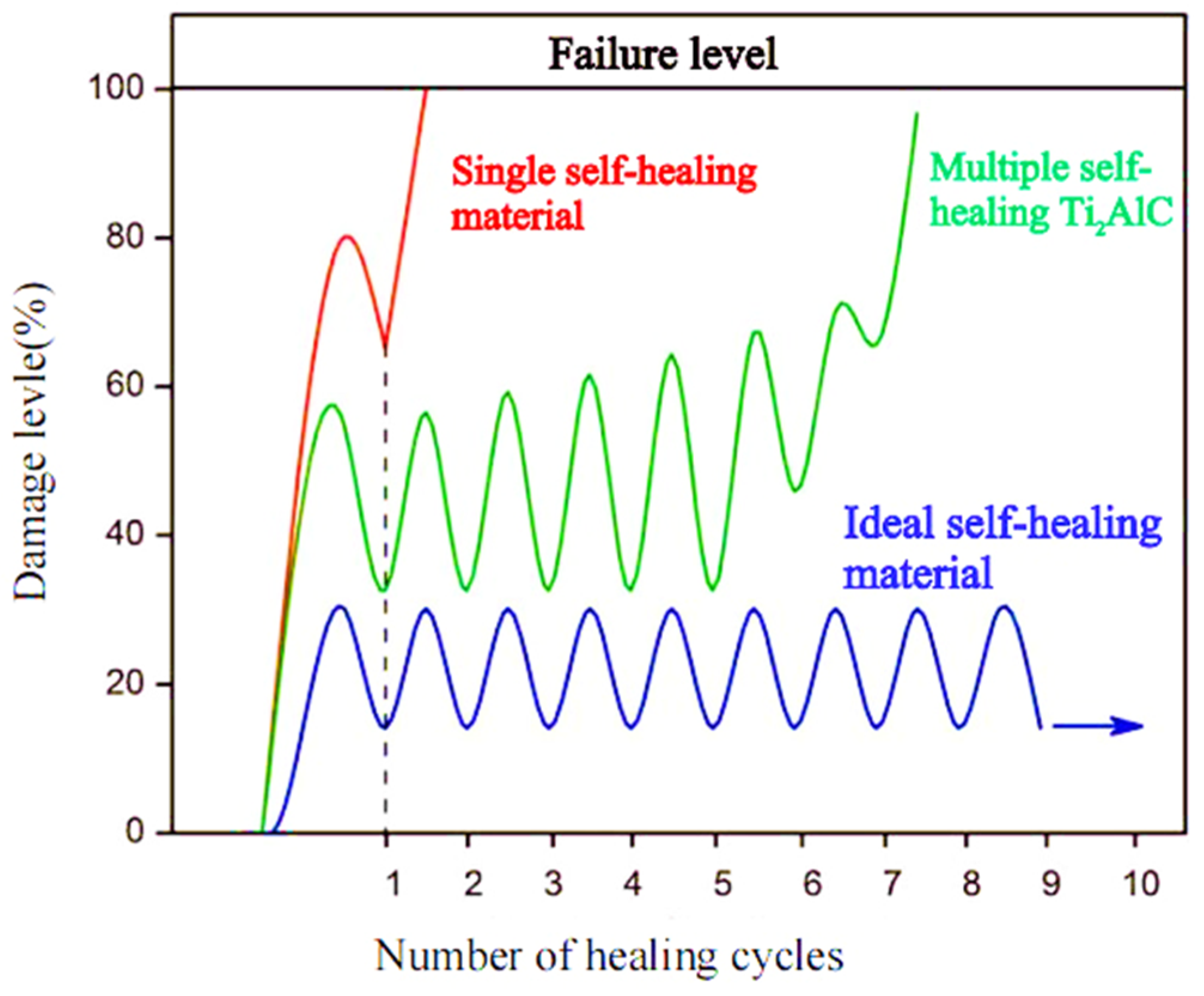
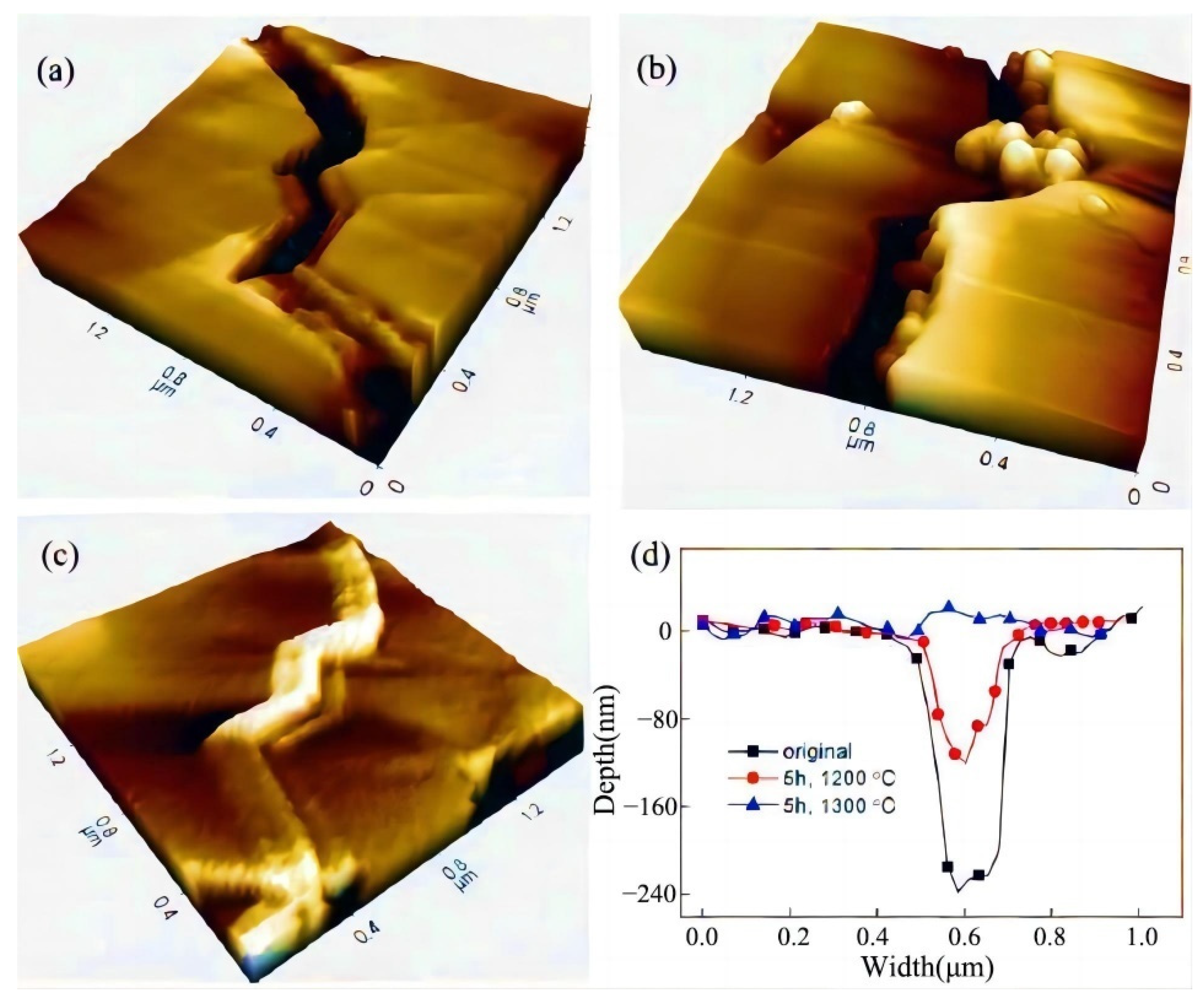
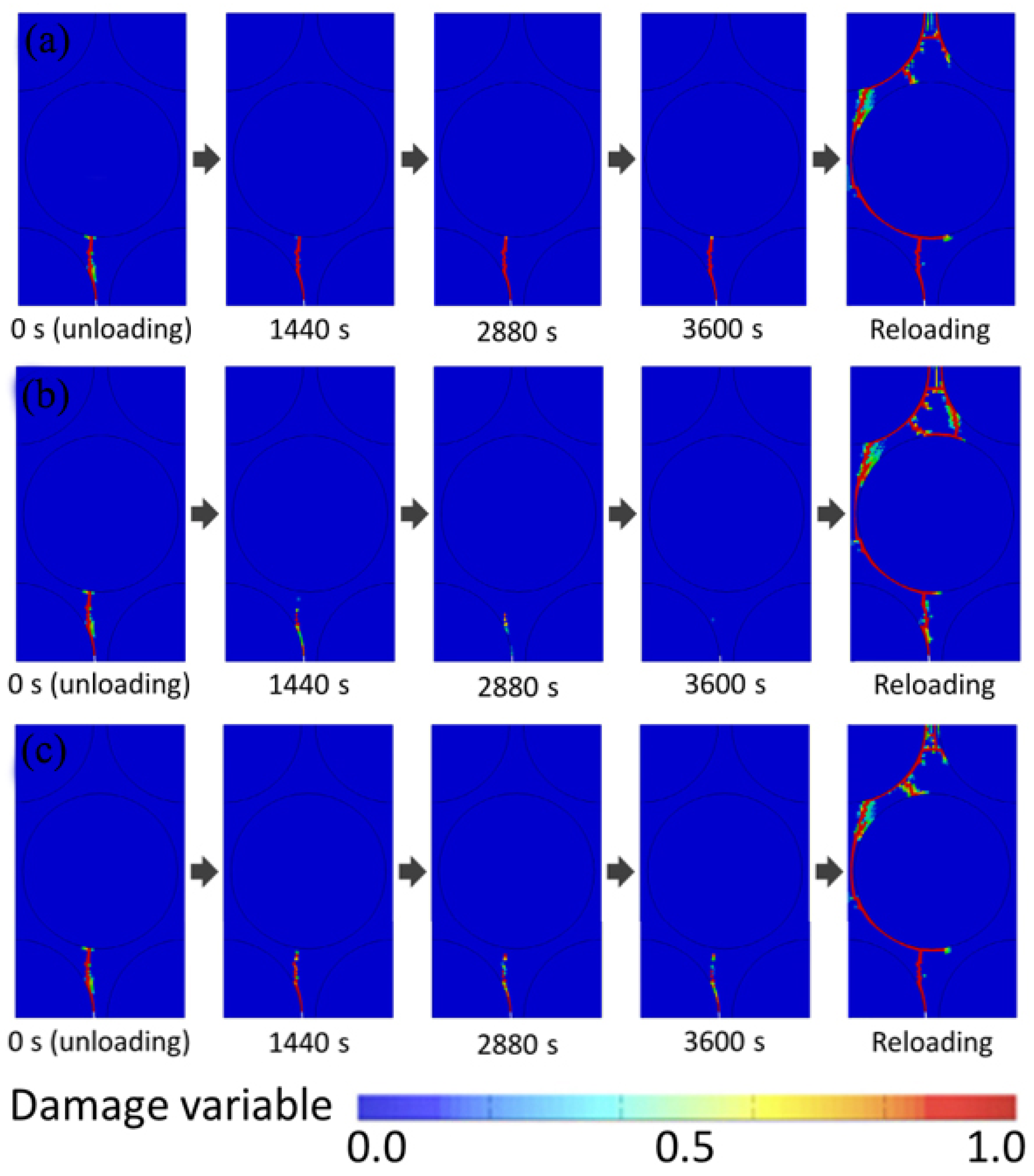
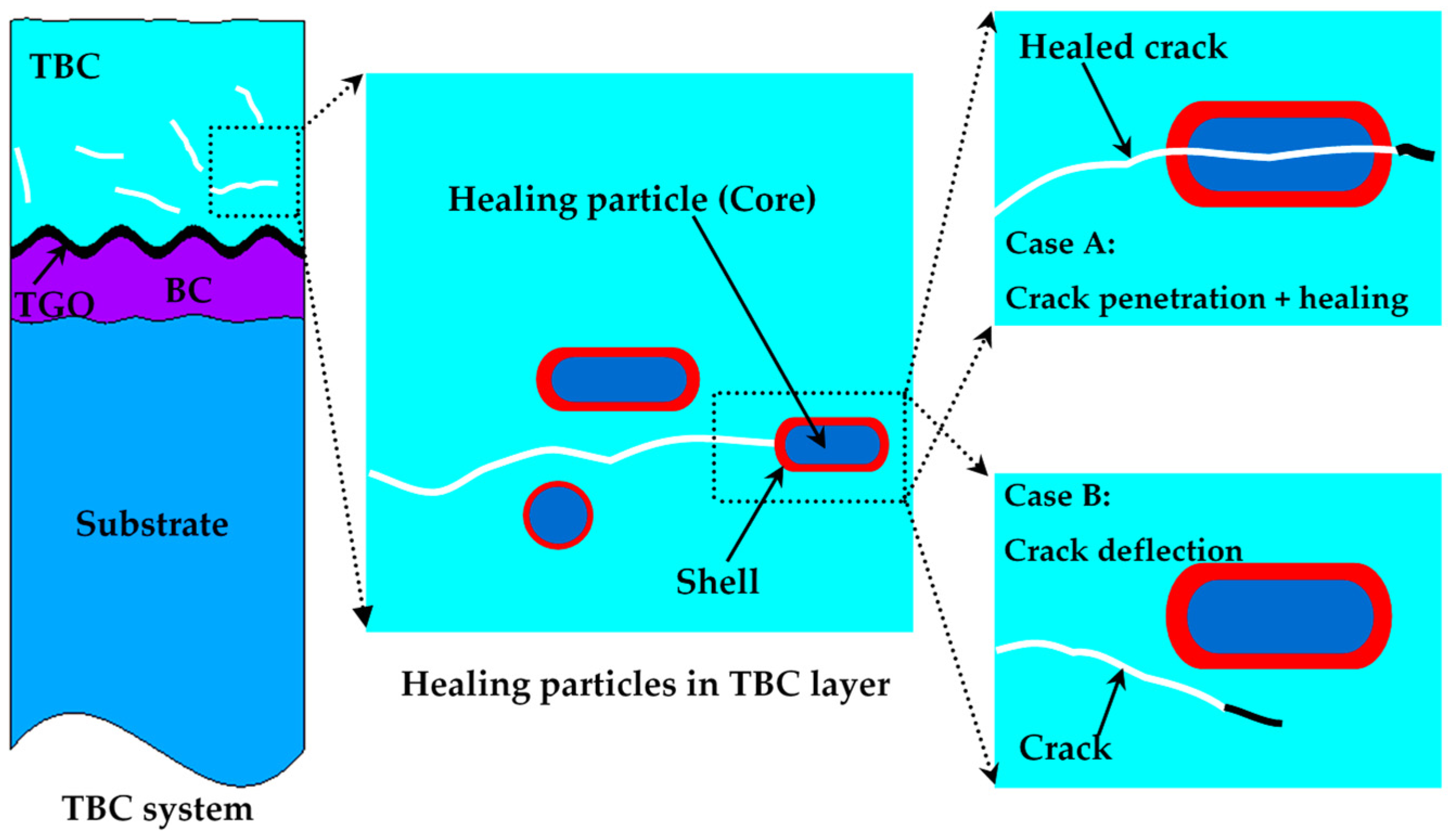


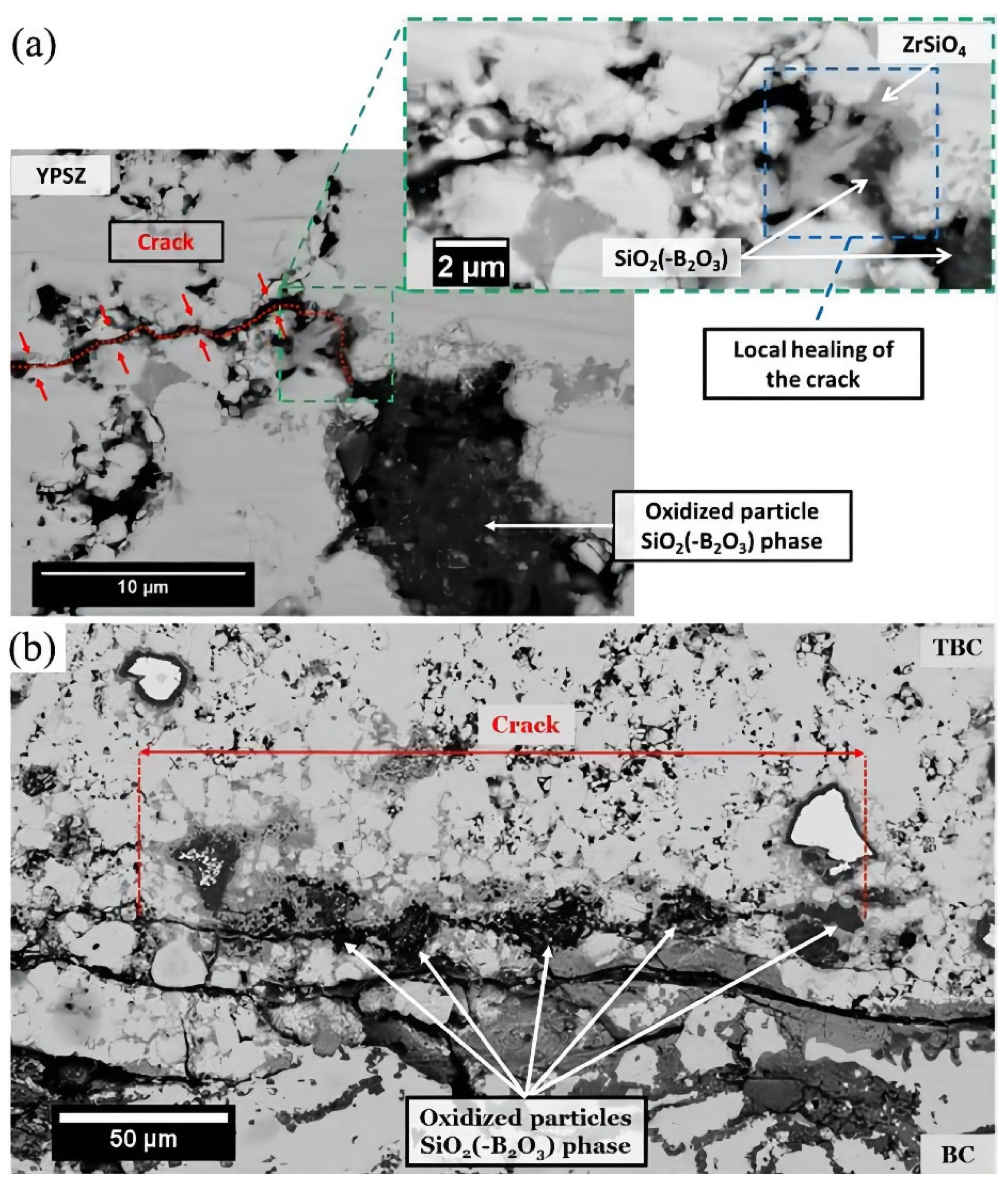
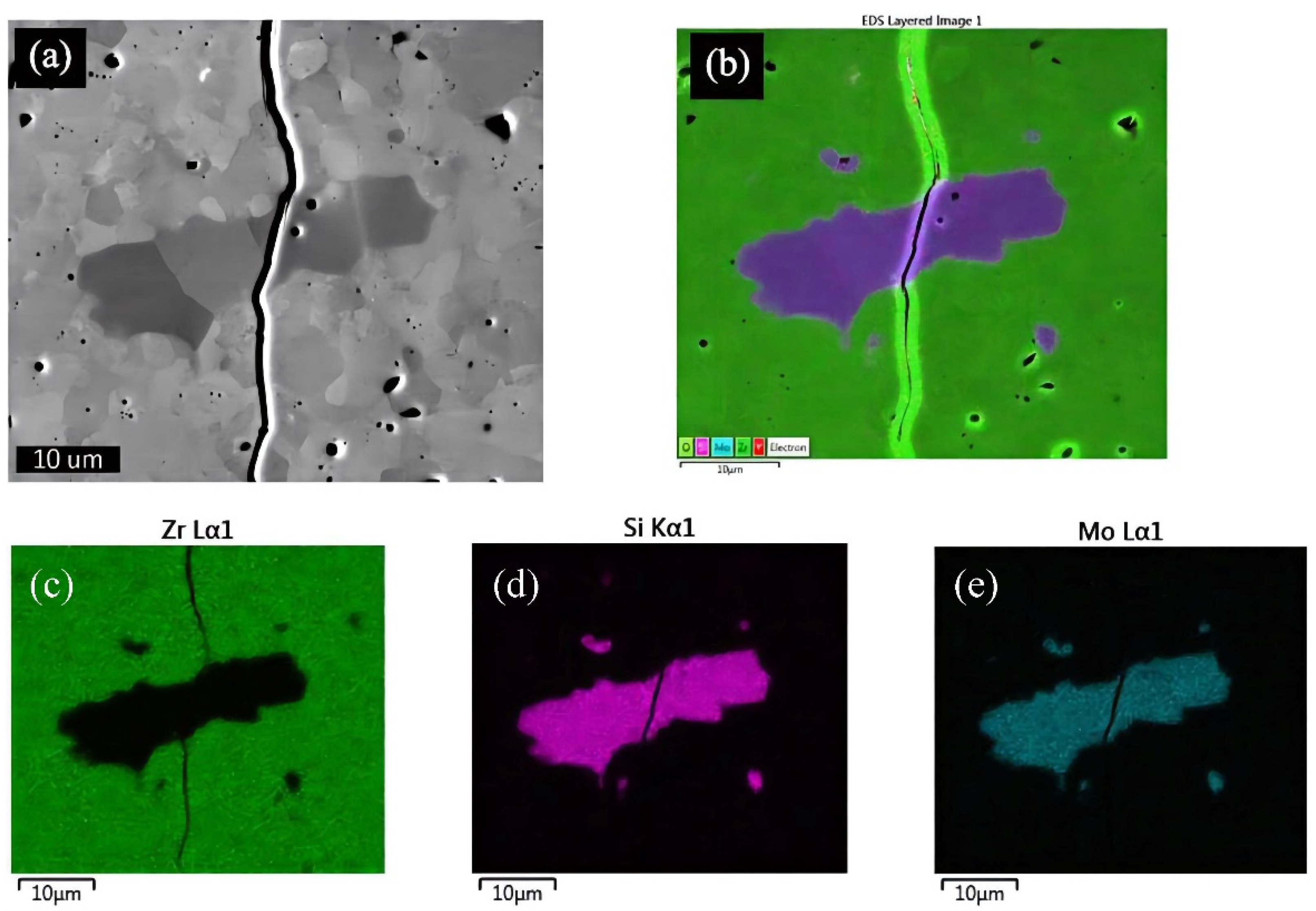
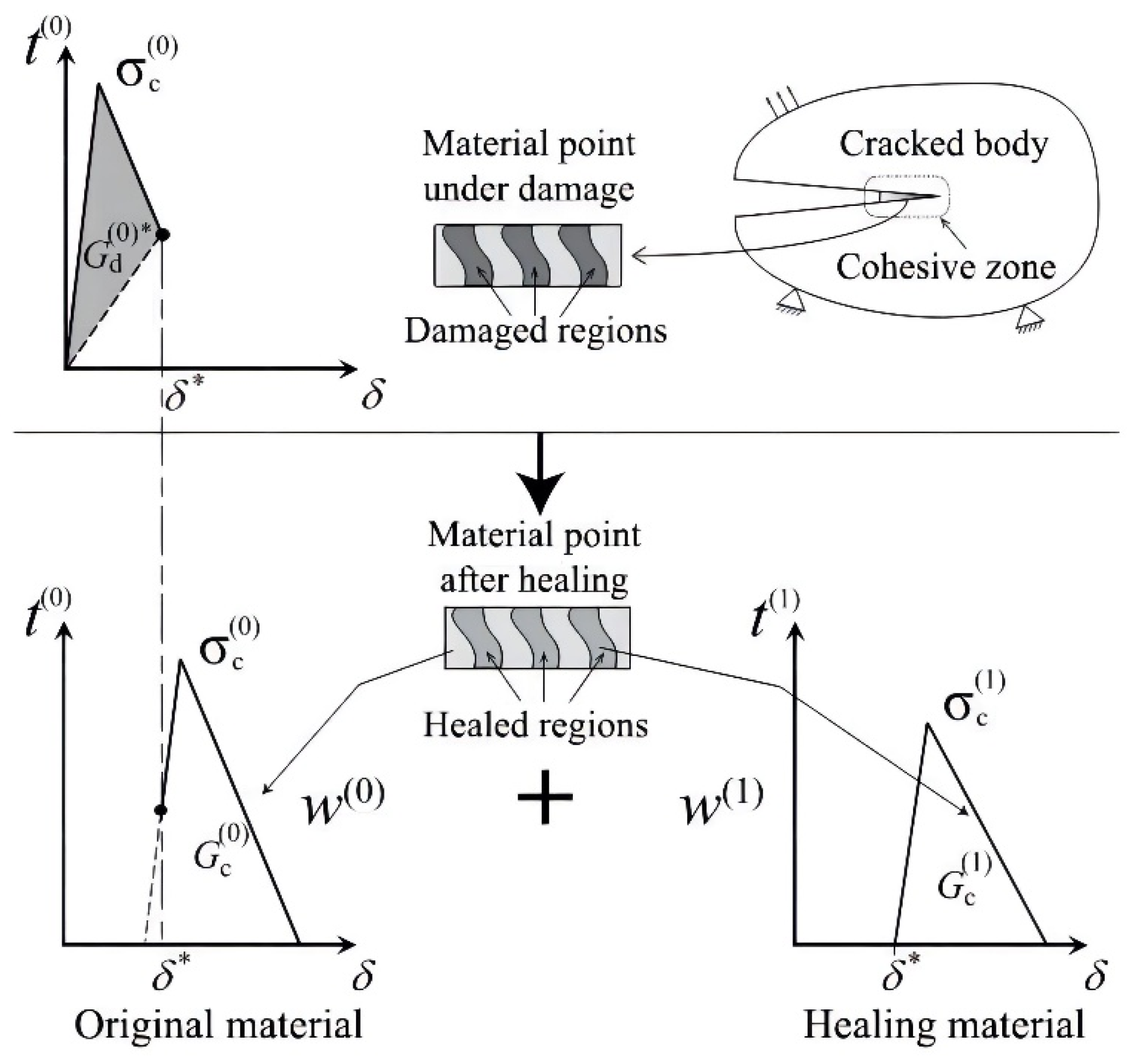


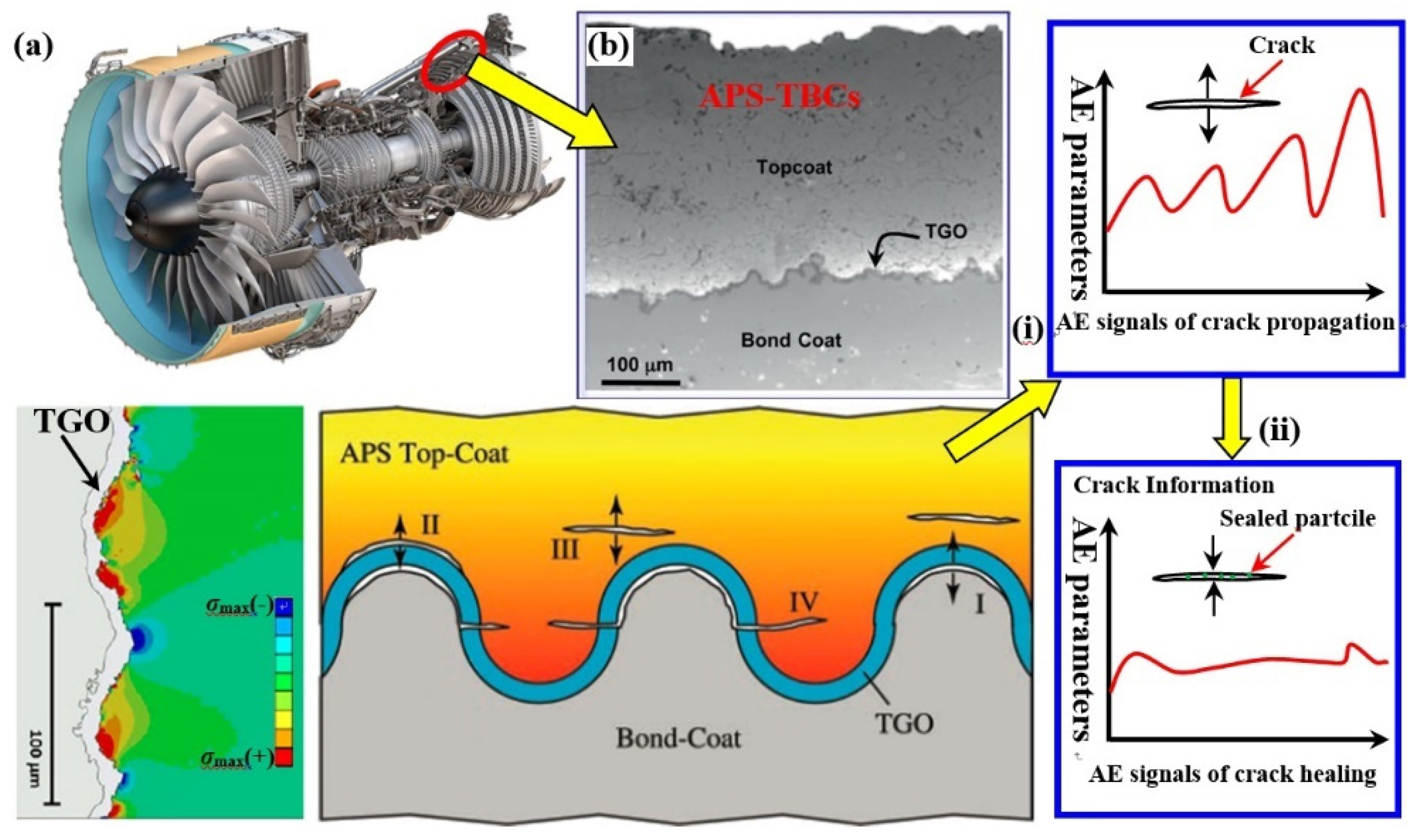
| Type | Plasma Spraying (PS) [11] | Electron Beam–Physical Vapor Deposition (EB-PVD) [18,19] | Plasma Spraying–Physical Vapor Deposition (PS-PVD) [28] |
|---|---|---|---|
| Years | Since 1950s | Since 1980s | Since early 21th century |
| Schematic illustration of the apertures | 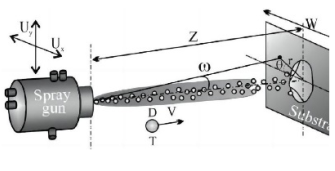 | 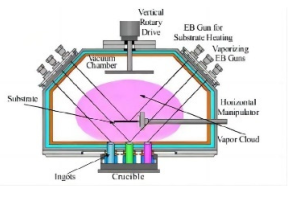 | 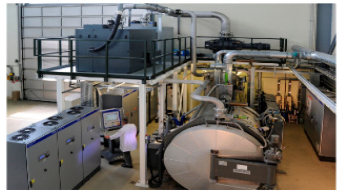 |
| Coating material | Nickel base alloy | MCrAlY alloy | Ceramic |
| Micro-structure of the coating | 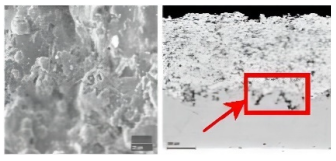 |  | 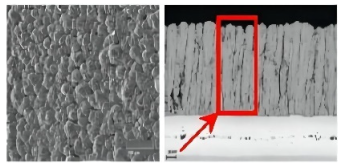 |
| Merits | (1) High thermal insulation (2) High deposition rate | (1) High strain tolerance along the transverse direction (2) High thermal shock resistance | (1) High deposition rate (2) be suitable for large size workpiece (3) Lamellar and/or columnar structure coating can be obtained (4) Relatively high thermal insulation and high thermal shock resistance (5) Non-in-sight deposition |
| Disadvantages | (1) Low thermal shock resistance (2) In-sight deposition | (1) Low thermal insulation (2) Low deposition rate (3) Be hard to control the composition of the coating (4) low fabrication ability for the large size workpiece (5) In-sight deposition | (1) The process maturity needs to be further improved (2) High cost |
| Materials Type | Materials System | Self-Healing Mechanism | References |
|---|---|---|---|
| ceramic | MoSi2, CrMoSi, CrSi2 | SiO2 particle induced by high temperature oxidation fills the crack | [2] |
| Ti3AlC2, Ti2AlC | The reaction products of α-Al2O3 and a small amount of rutile-TiO2fills the crack with a width less than 1 μm | [5,6] | |
| Composites | Hollow fiber-reinforced polymer matrix composites | Fiber fracture and pull-up of the layered stack composite, It is able to release the self-healing material in the fiber, prevents the crack propagation path, improves the fracture toughness of the material | [3,4] |
| NiAl-particle-reinforced Al2O3 ceramic–matrix composite | The generation of oxide fills the crack | [7] | |
| Ceramic film/coating | Nanocrystal TiAlCrSiYN prepared by PVD on the TiAl substrate | After high-temperature oxidation aging, a dense (Al, Cr) 2O3 protective film layer will be generated on the surface of the as-sprayed film, the induced film layer will have the self-healing effect on the underlying coating layer | [8] |
| TiC, MoSi2 etc. reinforced YSZ, ZrO2-Al/Ni thermal barrier coatings | The generation of oxide with relatively low density | [10,11,12,13] |
Publisher’s Note: MDPI stays neutral with regard to jurisdictional claims in published maps and institutional affiliations. |
© 2022 by the authors. Licensee MDPI, Basel, Switzerland. This article is an open access article distributed under the terms and conditions of the Creative Commons Attribution (CC BY) license (https://creativecommons.org/licenses/by/4.0/).
Share and Cite
Liu, B.; Zhou, J.; Wang, L.; Wang, Y. Research Progress of Self-Healing Thermal Barrier Coatings: A Review. Coatings 2022, 12, 1724. https://doi.org/10.3390/coatings12111724
Liu B, Zhou J, Wang L, Wang Y. Research Progress of Self-Healing Thermal Barrier Coatings: A Review. Coatings. 2022; 12(11):1724. https://doi.org/10.3390/coatings12111724
Chicago/Turabian StyleLiu, Bin, Jianping Zhou, Liang Wang, and You Wang. 2022. "Research Progress of Self-Healing Thermal Barrier Coatings: A Review" Coatings 12, no. 11: 1724. https://doi.org/10.3390/coatings12111724
APA StyleLiu, B., Zhou, J., Wang, L., & Wang, Y. (2022). Research Progress of Self-Healing Thermal Barrier Coatings: A Review. Coatings, 12(11), 1724. https://doi.org/10.3390/coatings12111724







